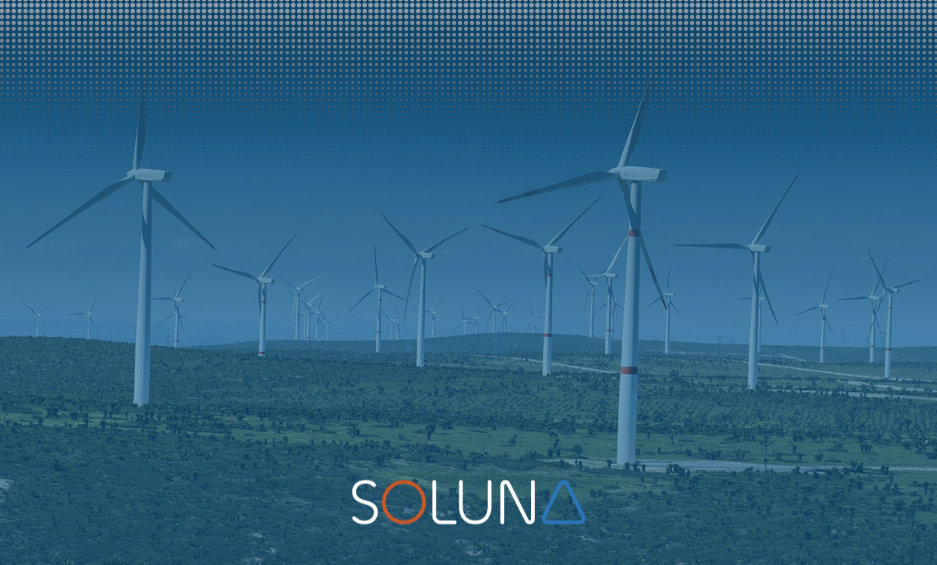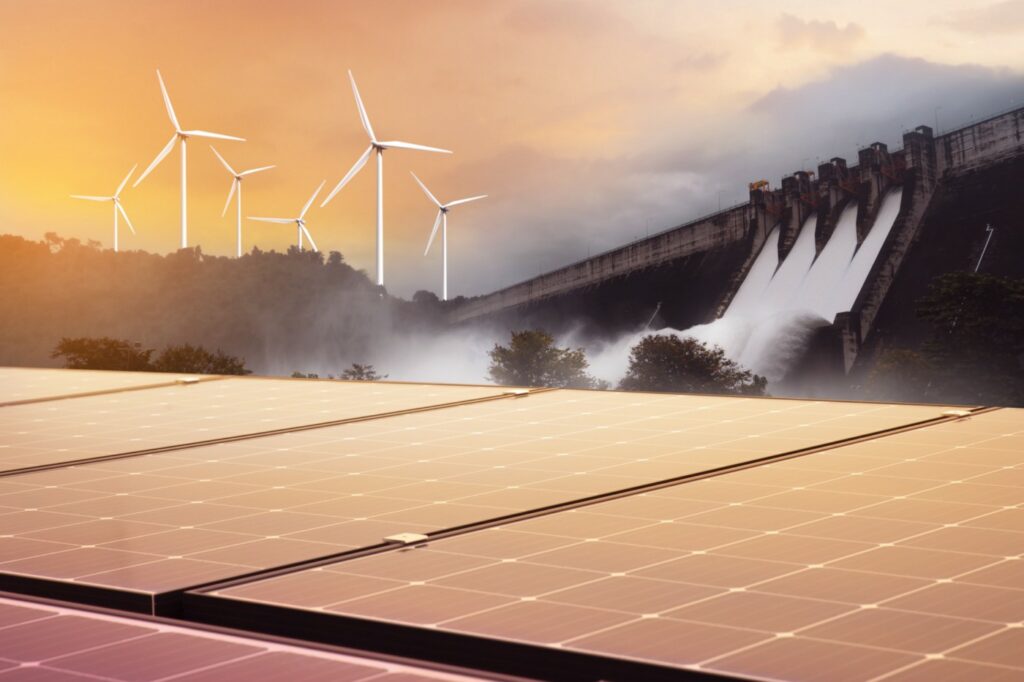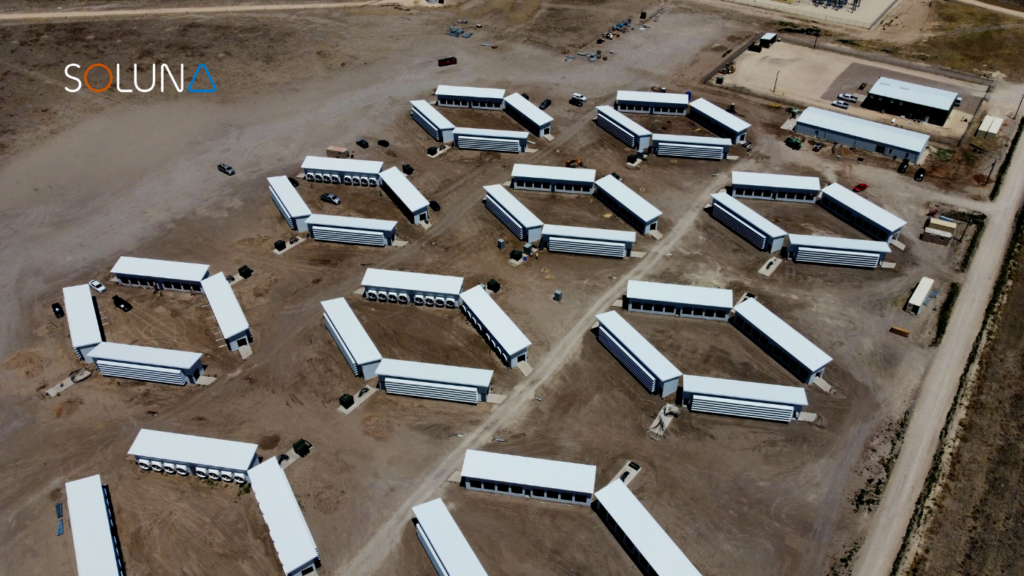Soluna Computing CEO John Belizaire joined Graham Mattison of Water Tower Research on Tuesday, November 29, 2022, for a virtual Fireside Chat. Watch the full discussion below.
This transcript has been edited for print.
We are excited to have you here and thank you for making the time. I will start with the first question- what got you to Soluna and this space?
The journey that led me here started in Morocco, where my colleagues and I were developing a project to harvest one of the best wind resources in the world. We were having difficulty developing the project because the grid wasn’t ready to accept the magnitude of power that our wind farm would produce. In our research to find a solution for this problem, it occurred to us that computing and the blockchain is the perfect, immediately deployable solution to absorb this excess clean energy. Once we identified this solution, we realized it was unlikely we were the only people to have this challenge.
Curtailed energy, it turns out, is a nearly universal problem in clean energy development. Up to 30% of clean power generated on solar and wind farms can be curtailed – or wasted – which decreases the profitability of these power plants. Curtailed energy is a problem in the United States because our grid is inflexible. It is based on a legacy architecture of equalizing supply and demand, and it’s not designed to handle the volume of clean energy that is in the pipeline.
The experience in Morocco led the founding team to build this business – Soluna Computing. It’s essentially the business that solves one of the biggest challenges at the wind farm in Morocco.
What about the industry has been different from what you expected, either in a good or challenging way?
Perhaps not different, but we have seen that our solution to curtailment is attractive, and most of the top renewable power producers are very receptive to our solution. It’s low risk for them and solves a major problem that hits their balance sheet. So, our hypothesis is being validated as we develop co-located projects.
Surprisingly, there aren’t a lot of data center companies that have taken our approach to building flexible data centers that are modular and scalable at renewable energy sites. The most popular approach to data centers has been to buy cheap power at remote locations, build gigantic, monolithic data centers, and offer a 24/7 customer experience. This is what we usually see from some of the biggest, legacy hosting services out there. They tend to be highly inefficient on the sustainability front, using a lot of water to cool the sites and so on.
In contrast, we build modular, scalable data centers that do compute intense batch processing. So, we don’t need to be on 24/7. Due to this, we don’t need to water cool our facilities and can be extremely efficient to get the most computing power.
We’ve also been challenged with reshaping the narrative or misperceptions that Bitcoin and bitcoin mining, specifically, is bad for our planet.
Cryptocurrencies have been in the news as of late, both with the turmoil around FTX and then the impact of crypto mining on the grid and the environment. What are these critics missing or misunderstanding?
The decline of FTX and other firms is certainly a surprise for many. I expect it will serve as a much-needed catalyst for regulation in the digital assets exchange industry. One thing I will say is that Bitcoin is not the same as Crypto. It has not gone down and continues to generate a new block every ten minutes.
Can you expand on how adding power consumption to the electric grid can add to the decarbonization of the grid?
To decarbonize the grid, we need to make renewable energy our primary or only source of power. And renewable energy is growing faster than the grid’s ability to keep up.
The acceleration of renewable sources increases grid congestion. This grid wasn’t built to handle the sheer magnitude of electrons we’re now capable of producing. At a certain threshold, the grid will overload. This results in curtailment or wasted energy.
Curtailment is excess energy that goes to waste because the grid lacks the capacity to transmit energy to where it needs to go. For context, at the end of 2021, 12.1 TWh of wind and solar generation was curtailed — the equivalent of the energy needed to power the entire state of Montana for one year. Intermittent energy production demands a flexible load in order to avoid massive waste.
How does Soluna fit into the solution you just talked about?
Soluna’s solution provides an additional load that offsets the disparity between generation and demand and helps strengthen the grid. We place a load right next to the point of generation, co-locating our data centers with wind and solar farms. In this way, we act as both a sponge for the excess energy being generated and an asset optimization solution for IPPs, an off-taker that will pay a positive price for that energy.
Doing so removes the cost the producers would incur if they had to sell the energy back to the grid at a negative price, and provides them with an additional source of revenue that otherwise wouldn’t exist. This is both an idiosyncratic solution and a structural one.
Each power producer has its own pain points and individual needs. But grid congestion happens on a structural level. Alleviating the pain points of individual producers eases the overall burden of grid congestion and smooths the issue of covariance, making the grid a better piece of infrastructure, one that is less likely to break due to overloading.
Our architecture enables utility-scale renewable energy assets to be built larger, interconnect faster, have a higher capacity factor (i.e. provide more value), and contribute more to system reliability.
Soluna has developed an innovative data center that can be co-located with utility-scale renewable energy assets, like solar and wind, in remote locations. These modular data centers perform Bitcoin mining, scientific, blockchain, and AI-related computing, creating unprecedented demand-side flexibility that matches intermittent power generation in real-time. Our architecture enables utility-scale renewable energy assets to be built larger, interconnect faster, have a higher capacity factor (i.e. provide more value), and contribute more to system reliability.
Soluna’s solution provides an additional load that offsets the disparity between generation and demand and helps strengthen the grid. We place a load right next to the point of generation, co-locating our data centers with wind and solar farms. In this way, we act as both a sponge for the excess energy being generated and an asset optimization solution for IPPs, an off-taker that will pay a positive price for that energy.
Our data centers are different from the typical hyper-scale data centers that power video streaming and websites. They are purpose-built for batchable — or interruptible — computing, including crypto mining.
At Soluna, we believe Bitcoin mining will help the global transition to clean energy. Bitcoin’s evolution is on the same path to ubiquity as the Internet and the Renewable energy industry is what is going to make it happen.
You recently did an interview on your Podcast with Sean Murphy talking about how artificial intelligence and machine learning can transform the energy grid and also how they can help shift the existing mentality to one of growing the pie of what is possible rather than fighting over share. What do you see this deluge of new data from the grid and power plants leading to when you think about the future of the grid?
My conversation with Sean Murphy, the founder, and CEO of PingThings, was an enlightening one. The work PingThings is doing to retrieve and assess real-time data from the grid is critical for improving grid efficiency. Not only are they gathering this data, but they’re doing one more instrumental thing: making this data open source– available to anyone.
An important point Sean made during our conversation was the opportunity for collaboration that open-source data invites. People, both other innovators in the space and customers, can now see a clearer picture of our grid’s performance, or lack thereof in some parts of our country, and work together on innovative solutions. Currently, it can take years to get access to this information, and then a few more years to propose, develop, and deploy a solution.
Bitcoin and other high-performance computing are scaling quickly, and if we want these processes to be done in a way that’s safe and beneficial for our planet, renewable energy has to scale quickly as well. As we discussed, renewable energy brings all sorts of problems to our legacy grid infrastructure, resulting in loads of wasted energy. This deluge of new data will give Soluna and so many other players in this space the precision required to optimize our solution, bring more clean energy onto the grid, and really mend the grid where it’s needed.
What do you see as the most important problem that Soluna can help solve?
Our mission is to better the world by making renewable energy the primary source of power using computing as a catalyst.
To do this, the curtailment solution has to be addressed and addressed soon. There are other solutions to curtailment, including batteries and transmission, but they aren’t immediate and still have issues with scale. Our solution is needed now, and deployable now.
Our solution serves 2 major players on this mission to make renewable energy a superpower:
- We solve one of the biggest problems in the economics of renewables–curtailment. For power producers, this means more revenue, tax credits, and more projects coming to life.
- We provide a seamless, green solution for cloud computing. For enterprises, this means meeting ESG goals at a fraction of the cost with no hassle in the transition from legacy, hyper-scale, hosting providers to a Soluna MDC.
In our initiation of coverage on Soluna, we talked about Project Dorothy in Texas, and how it is expected to more than double your operational footprint. Can you give us an update on where you are at in the development and approval process?
We always provide updates in our monthly Flash reports. If you haven’t seen the latest one, be sure to visit our Investor Center.
This year, ERCOT has added a Large Flexible Load process. It consists of 3 phases: planning, modeling, and operating.
We are on our final study in the planning phase which is reactive power. Once that has cleared, which we are confident it will, we then move into Phase 2 which is modeling. This is where ERCOT adds our facility to the software model of the entire grid to perform tests that ensure they can see the facility and the facility doesn’t have any issues. The model then becomes live. Phase 3 is operations. We expect we will be green-lighted to energize in the first couple of months of the new year.
What type of computing will you be doing at the site when it goes live? What is the long-term plan?
Our business has plans to expand beyond Bitcoin mining, into high-performance computing.
This means Soluna will partner with enterprises in the artificial intelligence, machine learning, scientific computing, video rendering sectors, and beyond.
There is significantly more capital available for the phase 2 business. We believe the total market for Phase 1 (crypto mining) and Phase 2 (batchable computing) is more than $105 billion today and growing. The batchable market is multiple times larger on a per unit of energy basis compared to crypto mining, allowing us to forge larger partnerships with power plant owners.
Our data centers are designed for this type of batch processing, which is a huge market opportunity for the overall market as traditional monolithic data centers are wasteful for these types of processing. Expanding into high-performance computing allows us to go after the wasted energy problem in a big way.
What do you think the street or investors are missing or misunderstanding about your story?
Soluna is the vanguard in renewable computing. We are a new class of digital infrastructure company, one powered by renewable energy that would otherwise go to waste (which solves a huge problem for renewable energy development). We design and implement data centers that are not just “green” in name, but the most efficient in the industry, paving the way for a reimagined future of cloud computing. We power high-intensity batchable processes like powering the Bitcoin network, video transcoding, scientific research, and deep learning.
For Bitcoin to go mainstream, it needs to be more ESG-friendly. Soluna has been able to combat the “dirty Bitcoin narrative” because we’ve built the perfect recipe – Integrate it with Renewables.
But we’re not just about Bitcoin – we are about the future of computing and sustainable IT.




